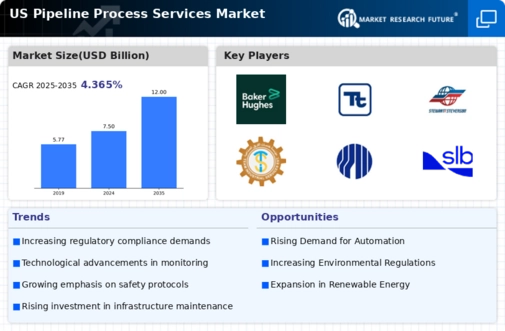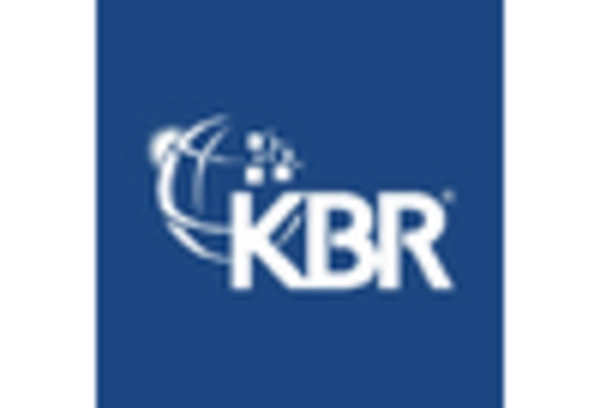Increased Regulatory Scrutiny
The pipeline process-services market is currently navigating a landscape of increased regulatory scrutiny. Federal and state agencies are implementing stricter regulations to ensure the safety and environmental integrity of pipeline operations. This trend is driven by heightened public awareness and concern regarding environmental issues, particularly in relation to oil and gas transportation. Companies operating in the pipeline process-services market must invest in compliance measures, which may include enhanced monitoring systems and environmental assessments. The financial implications of these regulations can be substantial, with estimates indicating that compliance costs could account for up to 15% of total operational expenses. As a result, firms that can efficiently navigate these regulatory challenges may gain a competitive advantage in the market.
Expansion of Natural Gas Markets
The expansion of natural gas markets is significantly influencing the pipeline process-services market. As the U.S. transitions towards cleaner energy sources, natural gas is increasingly viewed as a bridge fuel. The Energy Information Administration (EIA) projects that natural gas production will continue to rise, leading to an increased need for pipeline infrastructure to transport this resource. This trend is likely to create substantial opportunities for companies in the pipeline process-services market, as they will be required to provide services related to the construction and maintenance of new pipelines. Additionally, the growing demand for liquefied natural gas (LNG) exports is expected to further stimulate investment in pipeline infrastructure, thereby enhancing the overall market landscape.
Rising Demand for Energy Infrastructure
The pipeline process-services market is experiencing a notable surge in demand due to the increasing need for energy infrastructure in the United States. As the country seeks to enhance its energy security and reduce dependence on foreign oil, investments in pipeline construction and maintenance are expected to rise. According to recent data, the U.S. energy sector is projected to invest approximately $100 billion in pipeline infrastructure over the next five years. This investment is likely to drive growth in the pipeline process-services market, as companies require specialized services for the design, construction, and operation of these critical assets. Furthermore, the shift towards renewable energy sources necessitates the development of new pipelines to transport biofuels and natural gas, further expanding the market's scope.
Growing Focus on Safety and Risk Management
Safety and risk management are becoming increasingly critical in the pipeline process-services market. With the potential for catastrophic incidents, companies are prioritizing safety protocols and risk mitigation strategies. This focus is reflected in the growing investment in safety training and the implementation of comprehensive risk management frameworks. According to industry reports, organizations that adopt robust safety measures can reduce incident rates by as much as 40%. As safety becomes a key differentiator in the pipeline process-services market, firms that excel in this area are likely to attract more clients and enhance their reputations. Furthermore, the emphasis on safety is expected to drive demand for specialized services that support risk assessment and management.
Technological Advancements in Pipeline Monitoring
Technological advancements are playing a pivotal role in shaping the pipeline process-services market. Innovations such as smart sensors, drones, and advanced data analytics are enhancing the efficiency and safety of pipeline operations. These technologies enable real-time monitoring of pipeline conditions, allowing for proactive maintenance and reducing the risk of leaks and failures. The integration of Internet of Things (IoT) solutions is also becoming increasingly prevalent, with estimates suggesting that the adoption of IoT in pipeline management could improve operational efficiency by up to 30%. As companies in the pipeline process-services market adopt these technologies, they are likely to see a reduction in operational costs and an increase in service reliability, thereby attracting more clients and expanding their market share.

















Leave a Comment